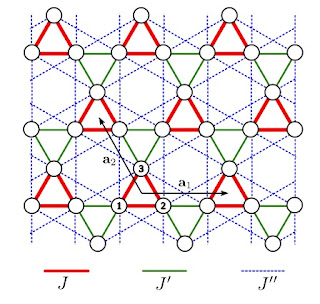I am interested in and passionate about climate change. At the moment, I'm considering my uni options - wondering what I can study to best equip me to help in the great, global effort to mitigate (I'm a bit less interested in adaptation) climate change. I have a couple of questions to ask of you.
1. How would you respond to each of the following, somewhat contradictory statements:
- 'Climate change can be mitigated by developing and deploying renewable energy and energy efficiency technologies, without significantly impacting on our standard of living.'
- 'Environmental crises, including climate change, require us to move away from a social and economic system based on consumerism and growth' .First, I am no expert on this complex issue. An economist at UQ who is an expert is John Quiggin. But, my view is that with energy efficiency measures, renewable energy, and some modest lifestyle changes significant progress can be made towards mitigating climate change. On the other hand, I think there are compelling social and political reasons why the world, particularly the Western world, would be better off if we moved away from this mindless and insatiable pursuit of consumerism and economic growth.
But, I really think the biggest obstacle to concerted and significant global action is a lack of political will and leadership. This is particularly driven by "fear mongering" from vested business and political interests who claim the first option is true. "If we don't burn more coal we will all end up back in the caves or at least riding bicycles..."
I don't think the biggest obstacle is missing technical and economic solutions. Of course, if someone can make a durable and reliable photovoltaic cell with 20 per cent efficiency, that costs 20 cents per square metre to manufacture, and with a lifetime of 20 years, it would "solve" the problem. But, I only foresee incremental advances in the next decade. The case of Gratzel cells is quite discouraging.
2. If the institutional ethos of the UQ science faculty were a person, how would he/she respond to the above statements?I think you would really encounter a range of views, probably reflecting a rang of political convictions. I would hope most staff would believe that climate change is real, a result of human activity, and a major issue to address. On the other hand, I am occasionally surprised and disappointed to meet scientists, who are skeptics, even though 97 per cent of climate scientists are not.
I think you would find that some would also claim we need lots more research money (especially for new technologies) to address these issues, but they are clouded by self interest.
3. What facets of science would you recommend that I study:
- Earth science (better understanding of the climate system)
- Physics/Engineering (renewable energy technology)
- Psychology (Why do people behave the way they do)
- Ecology (how ecosystems respond to climate change and other pressures)Given that I think the major obstacles are political I think that becoming a political activist you may have the biggest impact. Studying sociology and psychology may help design the most effective campaigns. But you do need to understand the technical issues.
On the other hand, you should consider what you are good at and enjoy. There is no point trying to put square pegs in round holes.
Hence, I think you should let your own interests and abilities be a consideration. But studying a mix of the above could be very helpful.
I am wondering if UQ has plans to develop a specific course, or even a program, devoted to climate change?Not that I am aware of. There are significant postgraduate activities at The Global Change Institute and the Energy Initiative. There was recently a review of the Bachelor of Science. The possibility of some elective courses that are multi-disciplinary has been floated and climate change is one. However, my experience is that such courses become a can of worms once you get multiple departments involved. Everyone wants a piece of the pie, to do it their way, but are not willing to take responsibility, or to "force" their own students to take the course so it is viable. Hence, I doubt you will see the kind of course you are hoping for during your time here. Sorry.
We ended our discussion with me lending the student a copy of The Eye of the Storm: the autobiography of Sir John Houghton. He is nice example of someone who moved from basic research in climate science to public policy and advocacy.
I wish I had more discussions like this with students.
I welcome people to give their own answers.















